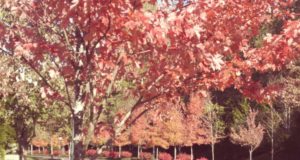
One Mabon Celtic ritual was taking the last sheaf of corn harvested and dressing it in fine clothes, or weaving it into a wicker-like man or woman. Apparently, they believed the sun was trapped in the corn and needed to be set free. So they burned it and spread the ashes on their fields.

Many people often associate autumn with being melancholy and facing the end of the liveliness of summer and the beginning of the bleakness of winter. Grey skies cause many people to retreat, both physically and mentally. Autumn is the time of year when the celebrated English poet, John Keats, wrote his most acclaimed poem, “To Autumn” which has a distinctly melancholy beauty.
The ancient Celtics, however, used this time to reflect on the past year as well as celebrate nature’s bounty by having a feast and a celebration. I imagine those were the roots for the Thanksgiving feast that Americans celebrate.
In my novella, “Unmasking the Duke,” I chose an autumn setting to add color to the story, but also to give it a dimension of a wistful longing. Don’t worry, like all my romances, this has a swoony happily ever after ending!
Unmasking the Duke
The last thing Hannah Palmer wants to do is flirt with men in a crowded ballroom, but when her sister, the Countess of Tarrington, throws a Masquerade Ball, Hannah can’t say no to the invitation. Taking comfort behind her disguise, she dances with a charming masked gentleman, matching him wit for wit. When the glorious evening culminates in a kiss, and the two remove their masks, Hannah is horrified to discover she’s been flirting with all night with her most despised neighbor, the Duke of Suttenberg. No matter how charming the duke was at the ball, and how wonderful the kiss, he is the last man she could ever love.
“Unmasking the Duke” is available in ebook and paperback
Autumn, Fall and Mabon posted first on http://donnahatchnovels.tumblr.com/

No comments:
Post a Comment